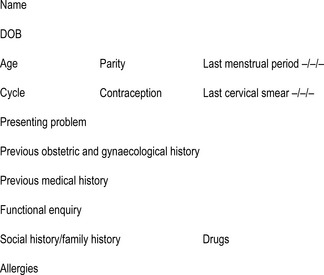1 Gynaecology history-taking
Presenting complaint
Abnormal bleeding
Does she suffer with a vaginal discharge and has she ever had pelvic inflammatory disease?
Past history
With regard to past history one should ascertain whether the woman has had any previous gynaecological problems and whether she has had any gynaecological surgery in the past (Fig. 1.1).







